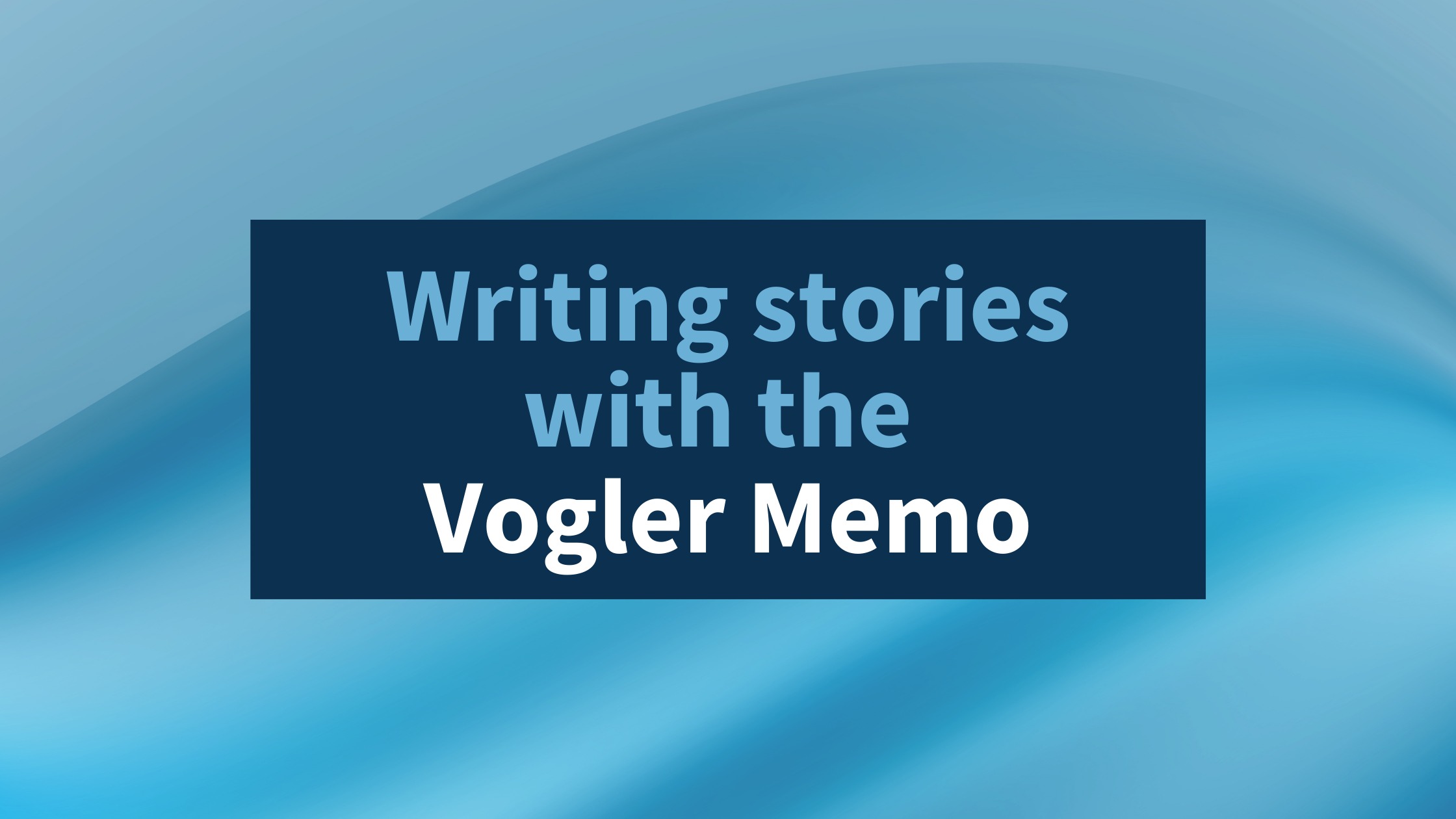In the world of novel writing, there are planners and there are pantsers.
Planners don’t put pen to paper until they know who their protagonist is, where they’re going, and where they end up. Hell, some won’t start until they know their protagonist’s blood type, how they take their coffee, and their least favorite cousin.
Pantsers—as in fly-by-the-seat-of-your-pantsers—dive into the white void of the blank page without so much as a map or a decent pair of hiking shoes. The trails they blaze may lead them to caverns of untold story treasure—or straight into a pit of stalagmites and scorpions from which they will never return.
But what if we were to tell you there’s a third method of writing: the snowflake method? It’s wildly popular because it simplifies the outlining process and gives writers a strong springboard for the novel.
If you’re curious about how the snowflake method can help you build your novel, this is the article for you. In this blog, we’ll give you:
- A rundown of how the snowflake method works
- Examples of the snowflake method using stories you already know
- Templates you can use to start making your own snowflake outline
We recommend downloading the templates now so you can review them as you read through this article. If you follow our advice, you’ll have everything you need to start outlining your next novel.
Definition of the snowflake method
Created by author, physicist, and self-proclaimed “computer geek” Randy Ingermanson, the snowflake method is a way to build a complex novel from a very simple idea. (Ingermanson says it’s based on a theoretical geometric shape known as a Koch snowflake.)
What begins as a summary sentence grows into the story itself—plot, characters, and all. And the best part is, since everything is based on a core idea, all the details therein feel connected and intentional and organic. Better still, the snowflake method doesn’t bog down the writer with minutia and discursions that won’t ever make it to the final cut.
Who needs the snowflake method?
The snowflake method is for planners and pantsers who want to try a different approach.
Planners tend to rely on linear roadmaps—think Campbellian monomyth, Kurt Vonnegut’s story shapes, Pixar’s famous formula for movies that make your parents cry. And while these are time-tested successes, maybe the planner is looking for a nonlinear organization tool that challenges them in ways these methods don’t.
Pantsers don’t play by the rules, but sometimes rules are what make the game. Experimentation without limit might produce a manuscript quickly, but what about cohesion? Great ideas told eloquently does not a story make. The snowflake method is a tether that grounds the pantser astronaut. It’s all the joy of exploration and none of the risk of drifting into space.
But most of all, the snowflake method is for the author of a million bright ideas and zero published novels. Sound like anyone you know?
Before we start outlining your novel
As we work through the following steps, take heed:
Don’t rush: Some steps take an hour, some a week, and some take even longer. If you speed through, you defeat the purpose of the snowflake method, which is, in part, to focus your attention on what matters in your story and ignore what doesn’t so you won’t waste time.
Go back if something feels wrong: If an area of your story lacks conflict or a character falls flat, it’s not a total loss! Go back a step and try to fix the problem there. Every step builds off the last, but that doesn’t mean you can’t reverse course and adjust as needed.
Challenge yourself: The story you have in your head may not look like the story you have on the page. But the truth is, the story you have on the page is the story. So when the snowflake method takes you to foreign waters, try to go with the flow.
Step 1: Start with a sentence
Estimated Time: One hour or more
Like it or not, every story needs an elevator pitch.
In a single sentence of fifteen words or fewer, write what your story is about. Ingermanson recommends spending as much as an hour crafting the perfect sentence. After all, this is the particle from which your story snowflake will take shape.
Here are examples of one-sentence summaries of stories you might know:
- A private detective investigates a murder aboard a transcontinental train. (Agatha Christie’s Murder on the Orient Express)
- Seven friends contend with a monstrous foe that feeds on children. (Stephen King’s It)
- Two stoners get into a world of trouble while going out for hamburgers. (Harold & Kumar Go to White Castle)
At this stage, you don’t need too many details—names, etc.—but you do want to set the stakes. What does your protagonist have to lose?
- A bloodthirsty evil hunts a pirate crew as they search for an ancient treasure.
- A nervous high school freshman gains the power to talk to inanimate objects.
- A poor man goes to ridiculous lengths to inherit millions from a dying uncle.
In each of these examples you have a general idea of the cast of characters, the central conflict, and what’s at stake.
Pro tip: Though we omitted it from our examples, build your sentence around the word must. What must your protagonist do? Detective Poirot must find the murderer. The Losers Club must defeat Pennywise before he kills the children of Derry, Maine. Harold and Kumar must get to White Castle because … it’s White Castle and, man, are those burgers delicious.
Step 2: Grow your sentence into a paragraph
Estimated Time: One hour or more
After you have your perfect one-sentence summary, build it out to a paragraph of three to five sentences.
Again, this is not the place to add too much detail, but aim for a clear beginning, middle, and end. We recommend sticking to Ingermanson’s rule of fifteen words or fewer per sentence.
As an example, let’s use the story of Stephen King’s It again:
An evil presence is murdering children in the small town of Derry, Maine. The force, known as It, often appears as an evil clown, though the beast can also manifest as rivers of blood, a frightening house, or a leprous beggar. Most adults seem unable to see or understand It, but a group of outcast children band together to force it into hiding. Years later, when It returns from its hibernation, the group reunites as adults and returns to Derry to take down It once and for all.
Step 3: Create basic character descriptions
Estimated Time: One hour per main character, a half hour per supporting character
In a separate document, compose a list of characters in your story. Start with your protagonist and antagonist, and then concoct a few minor characters.
Focus only on their motivations, but don’t write too much. A few words is all you need for now.
- What do they want?
- How do they plan to achieve it?
- What’s standing in their way?
- Once they overcome their obstacle, what have they learned? How have they changed?
Let’s take our made-up story about a high school freshman who talks to inanimate objects. He’s a ball of anxiety and just wants to fit in. Obviously mouthy lockers and chatty textbooks make him stand out—or rather, his reactions to them do. There’s his obstacle.
Does he try to ignore them? He might try to at first, but probably won’t work for long. Does he then have to break a curse that gives him this power? How can he do that when he has to cram for pre-calc? Perhaps his antagonist is a parent, or a school faculty member like a teacher or principal, or a nosy custodian, any of whom might think he’s on drugs or has fallen in with a bad crowd …
You get the idea.
But don’t move on to the next step until you understand, at least generally, where you want the arcs of each character to end. (Check out our guide on creating a strong character arc.)
Step 4: Turn your plot paragraph into a page
Estimated Time: Three to five hours
Set your characters aside and go back to your one-paragraph summary.
The first sentence is your Act One. Your second sentence is Act Two (or perhaps a major event that throws your character into Act Two). Separate these sentences and expand each of them into paragraphs of their own.
Besides hitting your one-page mark, you should focus on conflict—conflict between the protagonist and antagonist, conflicts between minor characters, and obstacles literal and figurative standing in your protagonist’s way. Here’s where you should also think about major events in the story—complications, disasters, twists, explosions, screw-ups, mistaken identities, and so on.
Step 5: Write a page for each character
Estimated Time: Up to two days
Now it’s time to write one-page descriptions of your protagonist, your antagonist, and maybe even a supporting cast member or two. For everyone else, write about half a page.
Spend a little time on physical descriptions, but the bulk of this work should center on the character’s perspective throughout the story. You’re essentially writing it from their perspective.
This is a valuable and often overlooked aspect of good storycraft that both planners and pantsers get wrong. Have you ever read a story that felt like the supporting cast or the villain just went into a closet until the protagonist needed to square off against them? This is the cure. It also helps you incorporate your secondary characters more closely with the plot and the world-building.
Step 6: Expand your plot page to four pages
Estimated Time: Up to a week
What was once a sentence became a paragraph. What was once a paragraph became a page. Now the page becomes something more.
Return to the paragraphs you expanded in Step 4, the ones you turned into a full page of plot. Expand those paragraphs even further, until each of your paragraphs becomes its own page.
Don’t try to cram this work into a single evening. Take a few days to ruminate on the movements of your story, on whether the scenes you’re crafting have an ebb and a flow of tension.
- Does the opening page launch your readers into the story and introduce the stakes enough?
- Do your middle pages play against the major conflict of the story?
- Does your last page feel like a resolution worthy of your whole novel?
- Do your characters feel believable, relatable, and distinct?
Step 7: Craft full character profiles
Estimated Time: Up to a week
Planners, this is the moment you’ve been waiting for. You want to really dig into your cast of characters? Now’s the time.
Read through your four-page synopsis and make lists of your characters: your protagonist and antagonist in one column, your supporting characters in another, and perhaps a third for important tertiary characters. Then, incorporating the one-page descriptions, go through your characters one by one and write down every detail you can think of—everything from their backstory to their likes and dislikes to their unique skills to what drives them to be a part of the plot.
Have fun with it. Throw in simple favorites—color, food, pastime, music—even if you don’t think these trifles will come up in the story. You never know! What if a supporting character has a serious sweet tooth and passes a bakery during a crucial moment. Will the smells of cinnamon buns distract them from the task at hand, and will that distraction lead to (highly readable) chaos? The choice is yours, but nothing is too silly or outlandish, as long as you end up with well-rounded, believable characters.
Step 8: Organize a scene sheet
Estimated Time: Up to a week (or more)
You’ve got your four-page plot synopsis and your stack of character profiles. Now, use our template to begin plotting out your scenes. Our story about the telepathic teen will look something like this:
POV Character: Novels with more than one point of view (POV) are popular and exciting when done well. Examples from popular literature include Cloud Atlas, The Testaments, and The Power.
If your novel has more than one POV, use this column to name which character is the POV for each scene. If your novel has only one POV, you can skip or delete this column.
Scene Details: In this column, you can copy and paste sentences from your synopsis that pertain to each scene. It’s important to note that by “scene,” we don’t mean chapter. We mean a small event in the plot of a story. A chapter might have two or three scenes, maybe more.
Extra Details: Make this spreadsheet your own by adding anything else you’d like to track. Here are a few ideas for extra columns you could add:
- Character arcs: to track scenes that correspond with events important to individual characters.
- Settings: to explore how the where affects what happens in each scene.
- Page length: to estimate how much a scene takes up in the greater story.
But Invisible Ink Editing, the pantsers moan, why bring spreadsheets into this?
Spreadsheets are the perfect tool for plotting the beats of your story into scenes and chapters. Far too often, we receive manuscripts with chapters that end in weird places or low points, like when you watch a movie on cable TV with all its shoehorned commercial breaks, when these chapters should end with mini-cliffhangers, hints at what’s to come, and anything else that propels the reader forward.
Finally, after your spreadsheet is filled out, use the column all the way to the left, titled Chapters, to group your scenes into different chapters. For now, go with what feels right. If three or four scenes take place in a single setting, perhaps that’s one chapter. Or maybe something big happens while the protagonist is in this setting, so that event is where one chapter ends and another begins.
Step 9: Build out your scene details (or start drafting)
Estimated Time: As long as it takes
Once you have your scene sheet completed, you’re ready to start writing your novel. You can do this in any word processor of your choice. Keep all of your snowflake worksheets on hand, as you’ll want to pull from them to flesh out your writing.
Instead of forging ahead, planners may wish to commune with their inner pantser by exploring the scenes in prose: What might the protagonist see in the city square when she goes to meet the captain of the guard? What does the mysterious science teacher keep on his desk? What sorts of conversations might the main characters have about trade relations between Gorthax’s second and third moons?
Pantsers have been patient long enough. They will probably want to launch into the first draft. And having done some basic planning, which shouldn’t have felt like planning at all, they will know where they’re going and a good idea of how to get there.
Now that you’ve read through the process of the snowflake method, it’s time to start outlining your novel. Fill out the form below, and we’ll email you free templates to kickstart the process.





